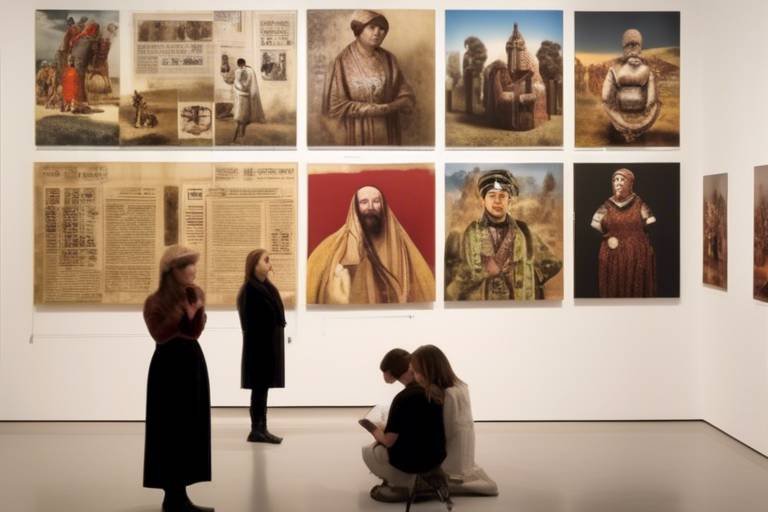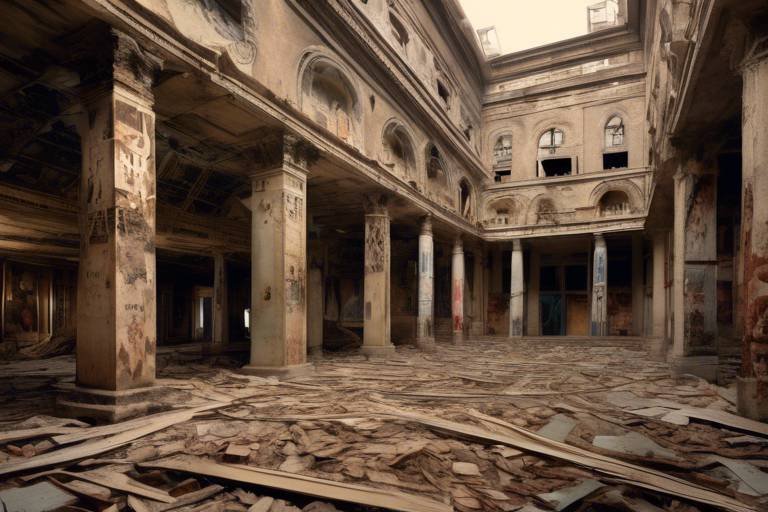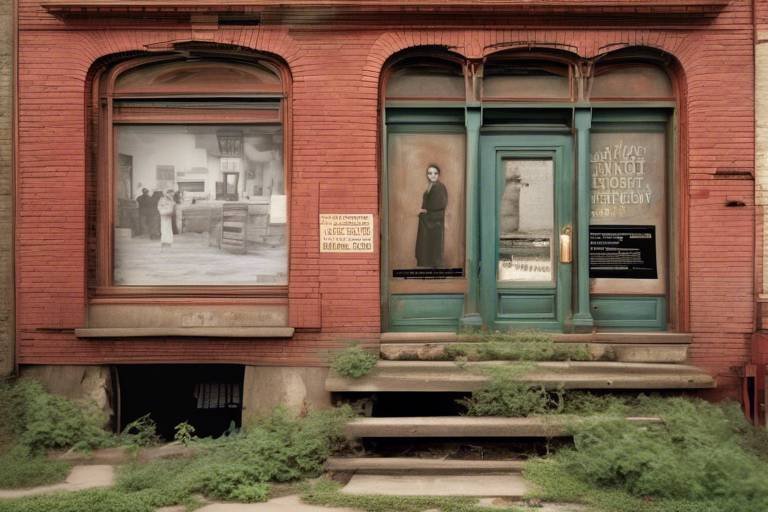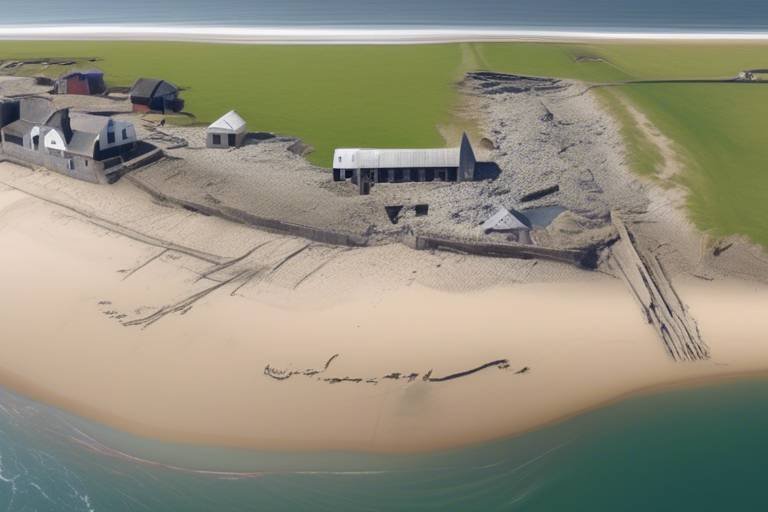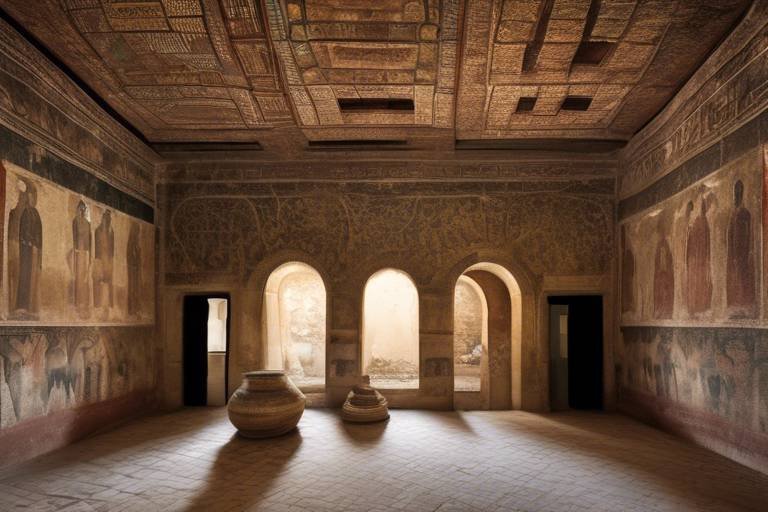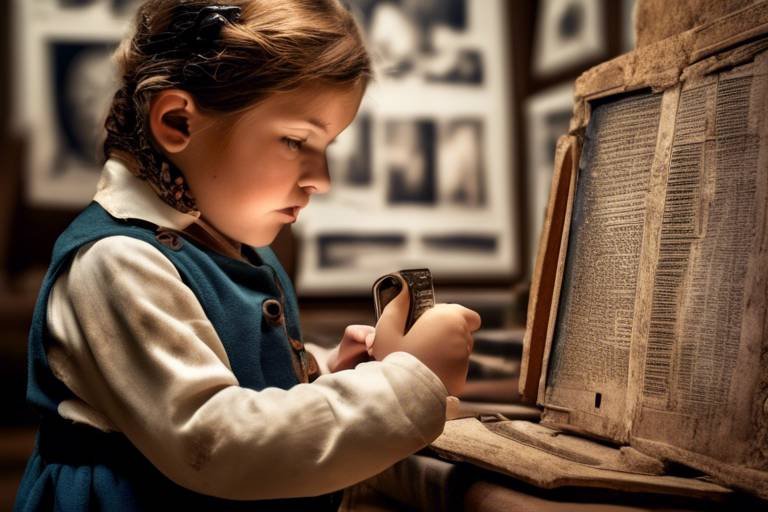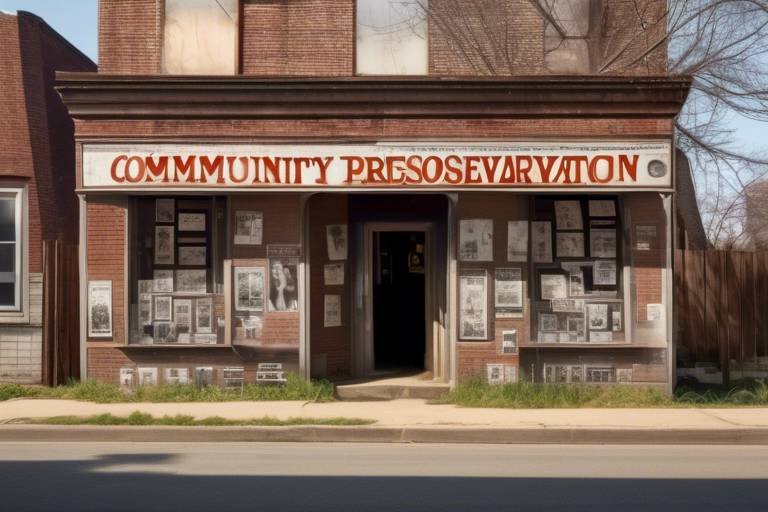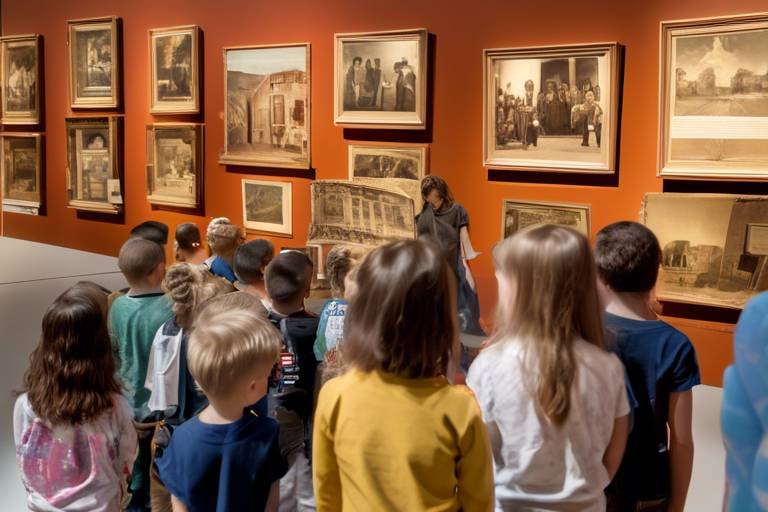How to Promote Cultural Heritage Through Art Exhibitions
Art exhibitions play a pivotal role in promoting and preserving cultural heritage by serving as dynamic platforms for showcasing diverse traditions, historical narratives, and artistic expressions. Through the strategic curation of artifacts and interactive displays, these exhibitions offer a unique opportunity to engage audiences, foster learning, and celebrate the rich tapestry of global cultures.
Curating a collection of artifacts representing various cultural aspects is essential in creating a comprehensive exhibition that educates and inspires visitors. By carefully selecting pieces that reflect different traditions, beliefs, and practices, curators can effectively convey the depth and richness of cultural heritage to a diverse audience.
Interactive displays and workshops further enhance the visitor experience by encouraging active participation and hands-on exploration. By immersing visitors in the sights, sounds, and stories of different cultures, these interactive elements create memorable and engaging experiences that resonate long after the exhibition ends.
Collaborating with local artists adds an authentic touch to art exhibitions, infusing them with genuine cultural perspectives and supporting the vibrant local art community. By involving artists in the curation process, exhibitions can offer a more nuanced and personal portrayal of cultural heritage, fostering a deeper connection with visitors.
Utilizing technology such as virtual reality and augmented reality opens up new possibilities for engaging audiences and bringing historical artifacts to life. By leveraging these innovative tools, art exhibitions can offer immersive storytelling experiences that transport visitors to different times and places, enriching their understanding of cultural heritage.
Community involvement and outreach are crucial aspects of promoting cultural heritage through art exhibitions. By engaging diverse cultural groups in the planning and execution of exhibitions, organizers can ensure representation, inclusivity, and a sense of ownership within the community, fostering a shared appreciation for cultural diversity.
Educational programs and guided tours provide visitors with in-depth insights into cultural heritage, offering a deeper understanding of the exhibited artworks and their significance. By providing context, historical background, and expert guidance, these programs enrich the visitor experience and encourage meaningful engagement with cultural artifacts.
Highlighting the importance of preservation and conservation efforts is essential in safeguarding cultural artifacts for future generations. By emphasizing the need for proper care and maintenance, art exhibitions contribute to the longevity and integrity of cultural heritage, ensuring that these treasures endure for years to come.
Facilitating cultural exchange programs and international collaborations through art exhibitions promotes cross-cultural understanding, dialogue, and appreciation of global diversity. By fostering connections between different communities and showcasing shared human experiences, these collaborations contribute to a more interconnected and harmonious world.

Curating Diverse Artifacts
Exploring the significance of art exhibitions in preserving and promoting cultural heritage, including strategies for leveraging art to showcase diverse cultural traditions and historical narratives.
Selecting a wide range of artifacts representing various cultural aspects to create a comprehensive exhibition that educates and engages visitors about different traditions and histories. Curating diverse artifacts involves meticulous research and curation to ensure a well-rounded representation of cultural diversity. By carefully selecting artifacts that embody the essence of different cultural traditions, art exhibitions can offer a rich tapestry of heritage for visitors to explore.

Interactive Displays and Workshops
Interactive displays and workshops play a crucial role in enhancing the overall experience of art exhibitions and fostering a deeper connection with cultural heritage. By incorporating hands-on activities and engaging presentations, these interactive elements create a dynamic environment that captivates visitors of all ages and backgrounds.
One effective strategy is to design interactive displays that allow visitors to actively participate in the learning process. For example, touch-screen exhibits can enable users to explore additional information about artifacts, historical contexts, or artistic techniques, providing a more immersive and educational experience. By encouraging tactile interaction, these displays cater to different learning styles and enhance visitor engagement.
In addition to interactive displays, workshops offer a unique opportunity for visitors to directly engage with cultural traditions and artistic practices. Through guided sessions led by experts or artists, participants can learn traditional techniques, create their own artworks, or delve deeper into the themes presented in the exhibition. Workshops not only empower individuals to express their creativity but also foster a sense of connection to the cultural heritage being showcased.
Furthermore, interactive workshops can serve as platforms for dialogue and exchange, allowing visitors to share their perspectives, ask questions, and interact with fellow attendees. By facilitating meaningful interactions and collaborative learning experiences, workshops contribute to building a sense of community within the exhibition space and encourage ongoing engagement with cultural heritage beyond the visit.
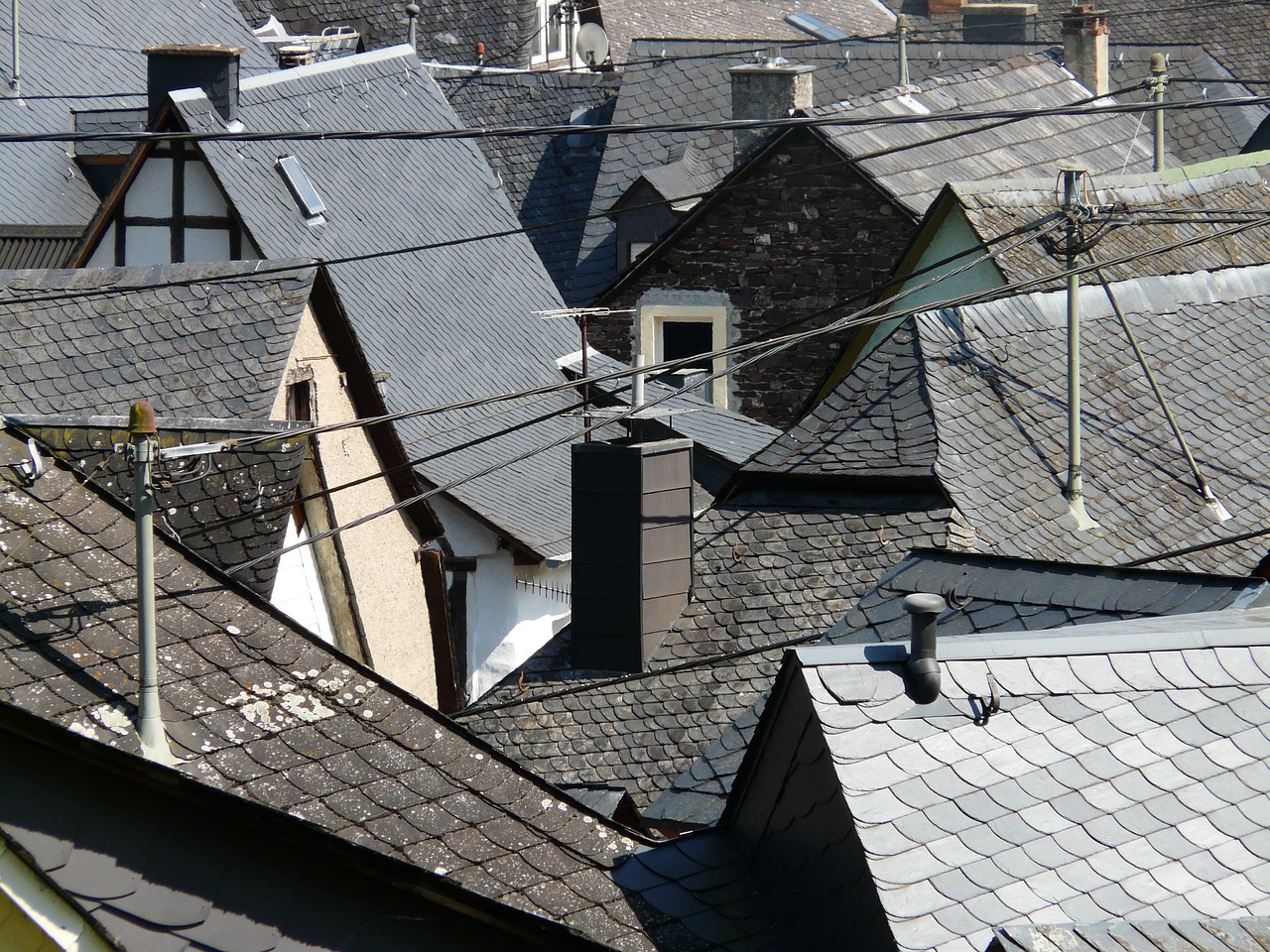
Collaboration with Local Artists
Collaborating with local artists is a vital aspect of curating art exhibitions that aim to promote cultural heritage. By involving artists from the community, the exhibition gains a unique perspective that authentically represents the local culture and traditions. These artists bring a deep understanding of the heritage and can infuse their artistic creations with stories and symbols that resonate with the audience.
Through this collaboration, the art exhibition becomes more than just a display of artifacts; it transforms into a living, breathing reflection of the community's identity. Local artists can contribute not only their artworks but also their knowledge and experiences, enriching the narrative woven through the exhibition. This partnership creates a sense of pride and connection among the local population, fostering a stronger bond with their cultural heritage.
Moreover, involving local artists in the curation process can also support the growth and recognition of the local art community. By showcasing their talents and creativity in a cultural context, these artists receive exposure and appreciation, encouraging further artistic exploration and innovation. This collaboration benefits both the exhibition and the artists, creating a symbiotic relationship that enhances the overall cultural experience for visitors.
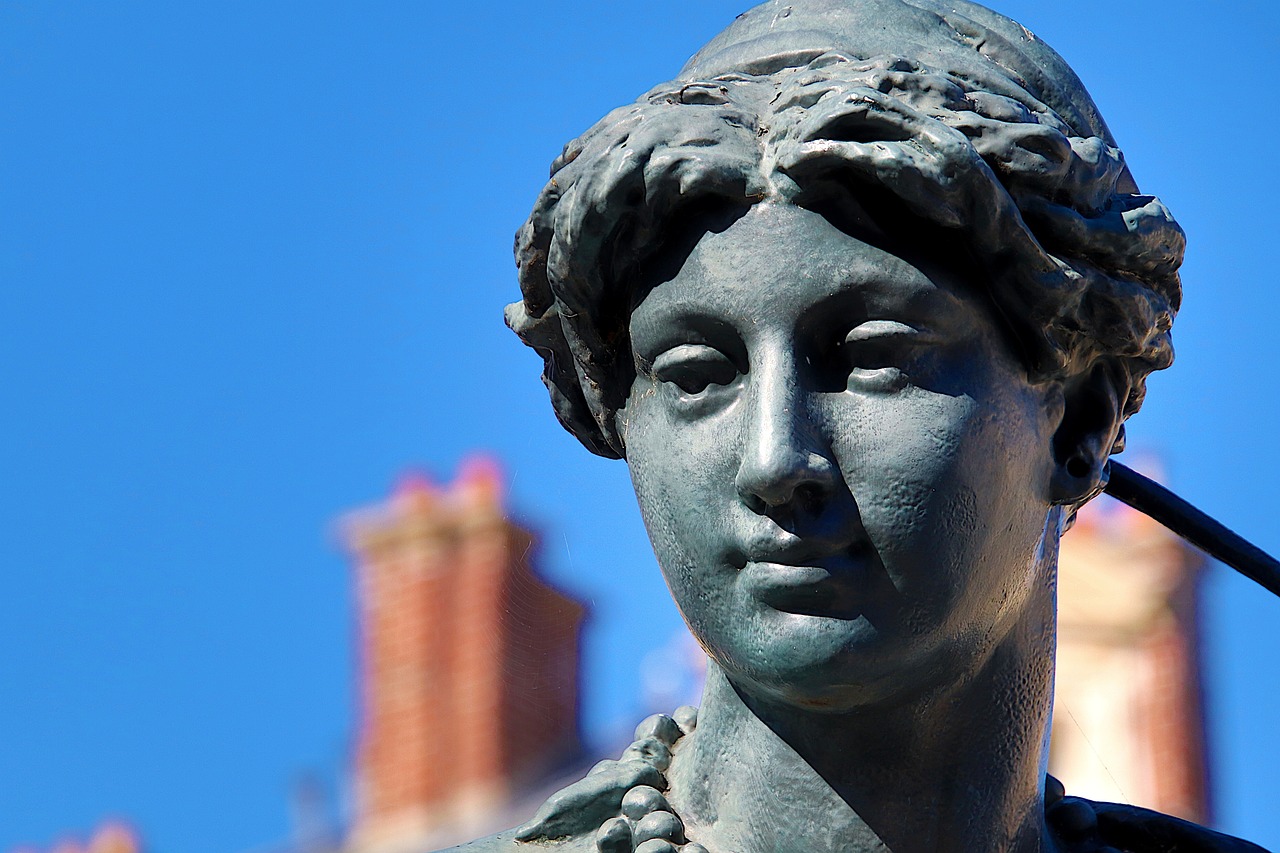
Utilizing Technology for Engagement
Exploring the significance of art exhibitions in preserving and promoting cultural heritage, including strategies for leveraging art to showcase diverse cultural traditions and historical narratives.
Selecting a wide range of artifacts representing various cultural aspects to create a comprehensive exhibition that educates and engages visitors about different traditions and histories.
Implementing interactive displays and workshops within art exhibitions to encourage audience participation, foster learning, and provide a hands-on experience of cultural heritage.
Engaging local artists in the curation process to infuse authentic cultural perspectives into the exhibition and support the local art community.
Leveraging technology such as virtual reality and augmented reality to enhance visitor experiences, offer immersive storytelling, and bring historical artifacts to life.
Involving the community in the planning and execution of art exhibitions to ensure representation, inclusivity, and a sense of ownership among diverse cultural groups.
Developing educational programs and guided tours that provide in-depth insights into cultural heritage, offering visitors a deeper understanding of the exhibited artworks and their significance.
Highlighting the importance of preservation and conservation efforts in maintaining cultural artifacts, ensuring their longevity, and safeguarding cultural heritage for future generations.
Facilitating cultural exchange programs and international collaborations through art exhibitions to promote cross-cultural understanding, foster dialogue, and celebrate global diversity.
When it comes to engaging audiences in art exhibitions, technology plays a crucial role in creating immersive experiences. By incorporating virtual reality and augmented reality, visitors can delve deeper into the cultural narratives behind the artworks. These technological tools not only enhance the visual appeal but also provide interactive storytelling, making the exhibition more engaging and memorable for attendees.
Stay tuned for the frequently asked questions section coming soon!
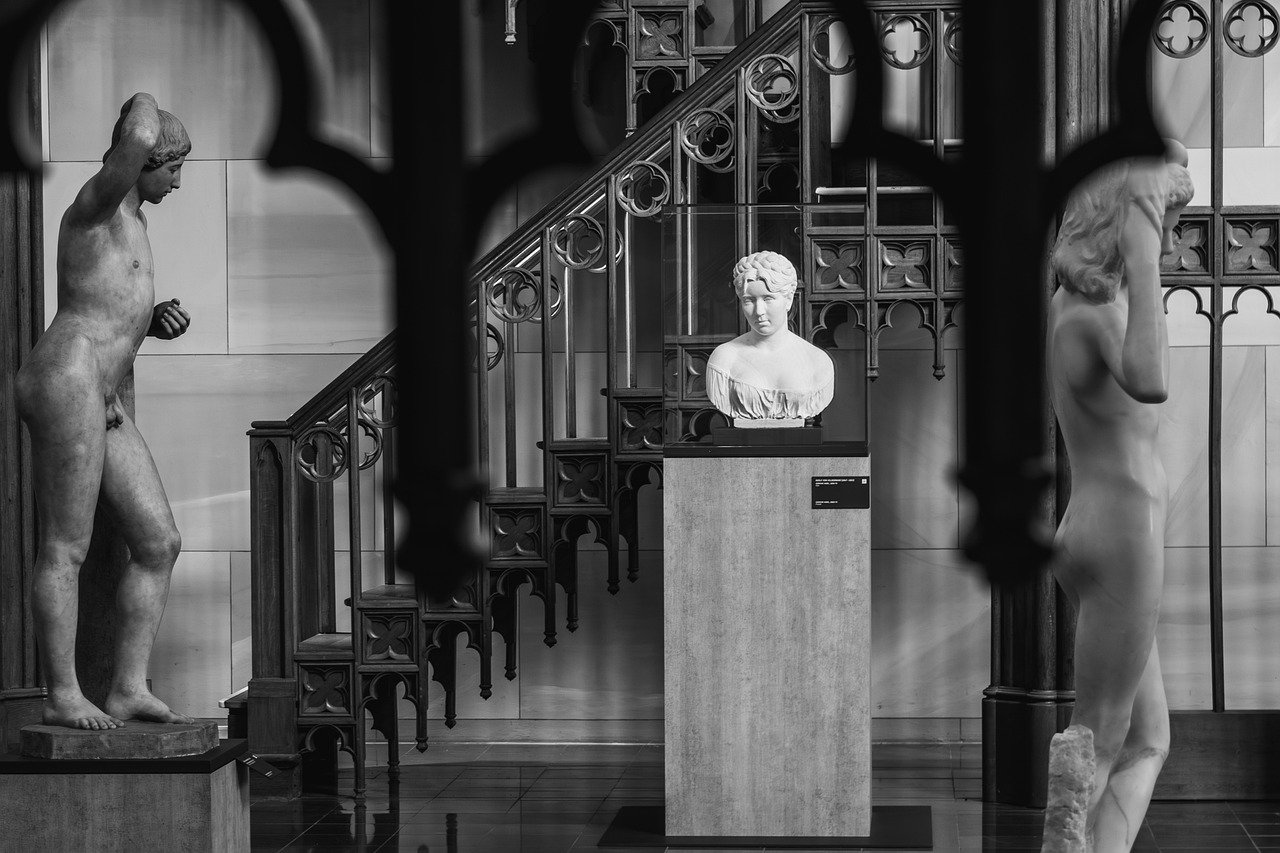
Community Involvement and Outreach
Exploring the significance of art exhibitions in preserving and promoting cultural heritage, including strategies for leveraging art to showcase diverse cultural traditions and historical narratives.
Selecting a wide range of artifacts representing various cultural aspects to create a comprehensive exhibition that educates and engages visitors about different traditions and histories.
Implementing interactive displays and workshops within art exhibitions to encourage audience participation, foster learning, and provide a hands-on experience of cultural heritage.
Engaging local artists in the curation process to infuse authentic cultural perspectives into the exhibition and support the local art community.
Leveraging technology such as virtual reality and augmented reality to enhance visitor experiences, offer immersive storytelling, and bring historical artifacts to life.
Involving the community in the planning and execution of art exhibitions to ensure representation, inclusivity, and a sense of ownership among diverse cultural groups. Community involvement can create a sense of belonging and pride, fostering a deeper connection with the exhibited cultural heritage. By engaging with local communities, art exhibitions can become more relatable and meaningful to a wider audience.
Developing educational programs and guided tours that provide in-depth insights into cultural heritage, offering visitors a deeper understanding of the exhibited artworks and their significance.
Highlighting the importance of preservation and conservation efforts in maintaining cultural artifacts, ensuring their longevity, and safeguarding cultural heritage for future generations.
Facilitating cultural exchange programs and international collaborations through art exhibitions to promote cross-cultural understanding, foster dialogue, and celebrate global diversity.

Educational Programs and Guided Tours
Exploring the significance of art exhibitions in preserving and promoting cultural heritage, including strategies for leveraging art to showcase diverse cultural traditions and historical narratives.
Selecting a wide range of artifacts representing various cultural aspects to create a comprehensive exhibition that educates and engages visitors about different traditions and histories.
Implementing interactive displays and workshops within art exhibitions to encourage audience participation, foster learning, and provide a hands-on experience of cultural heritage.
Engaging local artists in the curation process to infuse authentic cultural perspectives into the exhibition and support the local art community.
Leveraging technology such as virtual reality and augmented reality to enhance visitor experiences, offer immersive storytelling, and bring historical artifacts to life.
Involving the community in the planning and execution of art exhibitions to ensure representation, inclusivity, and a sense of ownership among diverse cultural groups.
Developing educational programs and guided tours that provide in-depth insights into cultural heritage, offering visitors a deeper understanding of the exhibited artworks and their significance.
Highlighting the importance of preservation and conservation efforts in maintaining cultural artifacts, ensuring their longevity, and safeguarding cultural heritage for future generations.
Facilitating cultural exchange programs and international collaborations through art exhibitions to promote cross-cultural understanding, foster dialogue, and celebrate global diversity.
1. How can art exhibitions help in promoting cultural heritage?
2. What role do local artists play in curating cultural exhibitions?
3. Why is community involvement important in art exhibition planning?
4. How do educational programs enhance the visitor experience at art exhibitions?
5. What technologies are commonly used to engage visitors in cultural heritage exhibitions?

Preservation and Conservation Efforts
Exploring the significance of art exhibitions in preserving and promoting cultural heritage, including strategies for leveraging art to showcase diverse cultural traditions and historical narratives.
Selecting a wide range of artifacts representing various cultural aspects to create a comprehensive exhibition that educates and engages visitors about different traditions and histories.
Implementing interactive displays and workshops within art exhibitions to encourage audience participation, foster learning, and provide a hands-on experience of cultural heritage.
Engaging local artists in the curation process to infuse authentic cultural perspectives into the exhibition and support the local art community.
Leveraging technology such as virtual reality and augmented reality to enhance visitor experiences, offer immersive storytelling, and bring historical artifacts to life.
Involving the community in the planning and execution of art exhibitions to ensure representation, inclusivity, and a sense of ownership among diverse cultural groups.
Developing educational programs and guided tours that provide in-depth insights into cultural heritage, offering visitors a deeper understanding of the exhibited artworks and their significance.
In the realm of preserving and conserving cultural heritage, it is vital to emphasize the meticulous efforts required to maintain the integrity of historical artifacts. Preservation involves safeguarding these treasures from deterioration, ensuring their longevity for future generations to appreciate. Conservation efforts, on the other hand, focus on actively repairing and restoring artifacts to their original state, combating the effects of aging and external factors that threaten their existence. By prioritizing preservation and conservation, we not only protect cultural heritage but also honor the stories and traditions embedded within these artifacts.
Facilitating cultural exchange programs and international collaborations through art exhibitions to promote cross-cultural understanding, foster dialogue, and celebrate global diversity.

Cultural Exchange and International Collaborations
When it comes to promoting cultural heritage through art exhibitions, one of the most impactful strategies is fostering cultural exchange and international collaborations. By facilitating interactions between artists, curators, and audiences from different parts of the world, these initiatives play a crucial role in promoting cross-cultural understanding, fostering dialogue, and celebrating global diversity.
Through cultural exchange programs, art exhibitions can serve as platforms for artists to share their unique perspectives, traditions, and artistic practices with a global audience. This exchange not only enriches the cultural landscape but also creates opportunities for artists to learn from each other, collaborate on projects, and form lasting connections that transcend geographical boundaries.
International collaborations in art exhibitions bring together artists, museums, and cultural institutions from various countries to create collaborative projects that showcase the richness and diversity of global cultures. These collaborations not only promote artistic innovation but also facilitate the sharing of knowledge, skills, and resources, leading to the development of new artistic practices and cultural expressions.
Moreover, by engaging in international collaborations, art exhibitions can attract a more diverse audience, including visitors from different cultural backgrounds and regions. This diversity not only enhances the overall experience for visitors but also fosters a sense of unity and interconnectedness among people from around the world.
Ultimately, cultural exchange and international collaborations in art exhibitions play a vital role in breaking down cultural barriers, promoting mutual respect and appreciation, and fostering a sense of interconnectedness in an increasingly globalized world.
Frequently Asked Questions
- What types of artifacts are typically included in cultural heritage art exhibitions?
In cultural heritage art exhibitions, a diverse range of artifacts is usually showcased, including traditional crafts, historical documents, religious artifacts, artworks, clothing, tools, and other objects that represent the cultural identity and history of a particular community or region.
- How can interactive displays enhance the visitor experience in art exhibitions?
Interactive displays in art exhibitions offer visitors a hands-on and engaging way to interact with cultural artifacts. These displays can include touch screens, virtual reality experiences, audio guides, and interactive installations, allowing visitors to learn about the exhibited artworks in a dynamic and immersive manner.
- Why is community involvement important in the planning of art exhibitions?
Community involvement ensures that art exhibitions are inclusive, representative of diverse perspectives, and resonate with the local population. By engaging the community in the planning process, art exhibitions can better reflect the cultural heritage of the region, promote social cohesion, and create a sense of ownership and pride among residents.
- How do educational programs and guided tours contribute to the understanding of cultural heritage?
Educational programs and guided tours provide visitors with in-depth information about the cultural significance of the exhibited artworks, historical contexts, and the stories behind the artifacts. These programs offer a deeper understanding of cultural heritage, enrich the visitor experience, and help preserve and transmit cultural knowledge to future generations.
- What role does technology play in enhancing the presentation of cultural artifacts in art exhibitions?
Technology such as virtual reality, augmented reality, interactive multimedia displays, and digital storytelling tools can enrich the presentation of cultural artifacts by offering immersive experiences, interactive narratives, and engaging storytelling formats. These technological innovations bring historical artifacts to life, making the exhibition more compelling and accessible to a wider audience.

